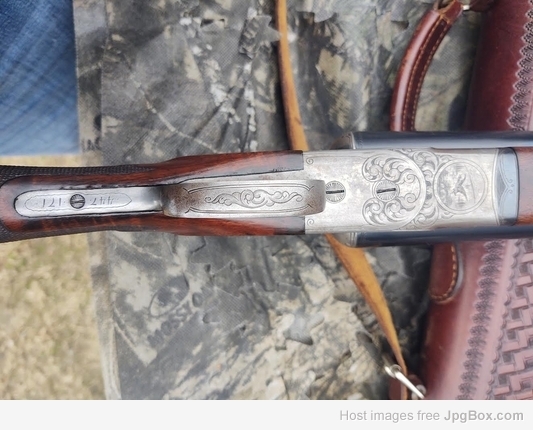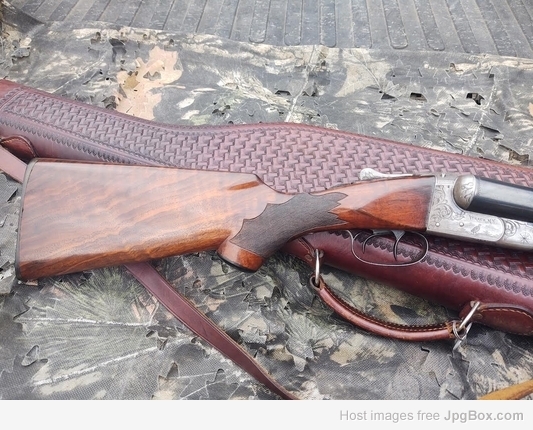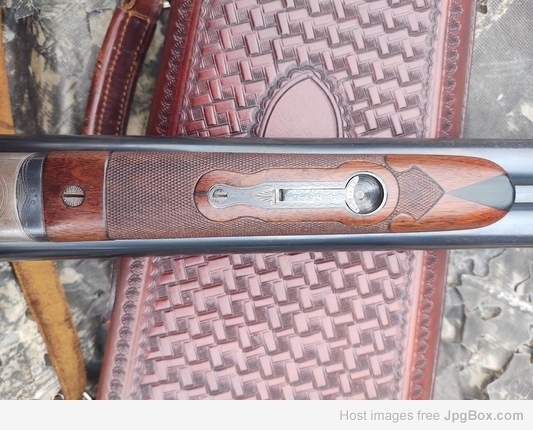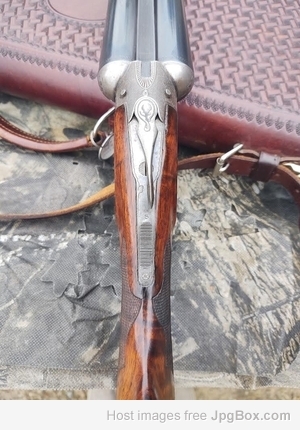Stan Hillis wrote: ↑Wed Dec 07, 2022 5:43 pm
My 10 ga. reloading project in the next year will be to find a good patterning 1 5/8 load of bismuth 4s. I really want to shoot as near the intended load in it as I can. I remember your excellent explanation of that in your articles, Frank. I'm sure I'll be referring to them many times in the future.
The wood is cut straight for the original buttplate. I'd considered grinding a recoil pad for it to increase the LOP. But, it's almost a certainty the distance between the screw holes wouldn't be the same, and dowels would have to be glued in. I really don't want to detract from the originality of this gun, even where it wouldn't be seen, so I'll likely just use my KickKiller lace-on leather pads to get another 1/2" LOP. They come right off after hunting and the gun will still be original.
I've had some questions on how to find my Super Ten article. For those interested, see Parts 1 and 2 of
One Special Duck Gun in the DGJ, Volume Twenty-Five, Spring and Summer 2014.
Stan, if using SP-10 wads in 2-7/8” hulls the capacity is limited and max weight of larger size lead shot is about 1-7/16 ounce. That's with a pie crimp. Hence the max weight of bismuth in SP-10's is a little less than 1-1/4 ounce - depending on density and the pellet size. To get heavier (mass) Bismuth loads you'll have to use bare shot as when your gun was made. Preferred single-base powders for max loads/moderate pressure are IMR SR7625 or SR4756. I'm sure you know both were discontinued some years ago but maybe you can implore a member or get some otherwise from a personal stash
Regarding doing up a pad but not plugging the existing holes in the wood = keeping things original and being able to revert to the factory buttplate, an expedient I've used is to newly cut one or both screw holes in a vintage recoil pad to match the hole centers in the wood. I do it on the mill with the pad held in the machine vise, using a 3/16" dia end mill at high speed, though I suppose a careful gent could do it on a drill press with the pad positively clamped to the table. Either way with a piece of 1/4" thick wood or similar underneath the pad base so the end mill doesn't contact the vise/table. Most recoil pad screws have a 3/16" diameter shank, and somewhat longer screws can be used if the original buttplate screws have a larger diameter shank.
My favorite vintage buttplate is the Jostam Hy-Gun which I've read was also Becker's preferred pad though I can't confirm that. They can be found quite often on E Bay and are usually still supple. Here for info is a pic of one I modified to match the wood holes on my pet Winchester Model 12 Sporting Clays gun.
frank
.






